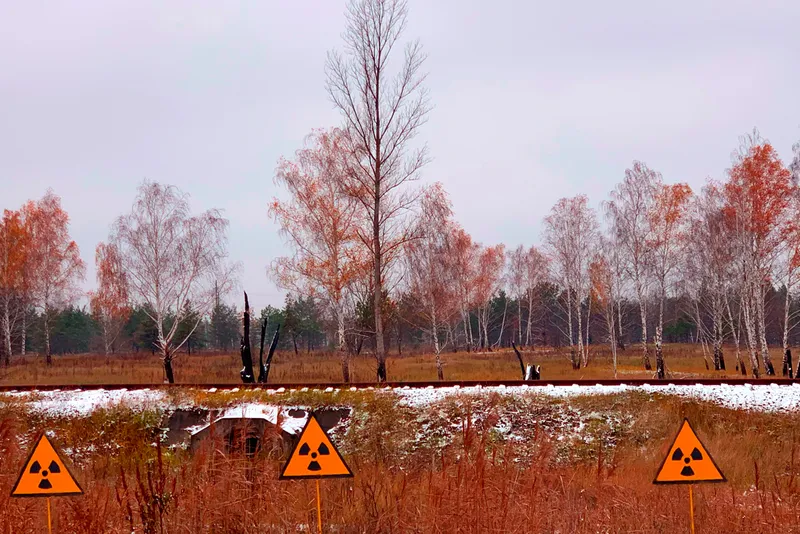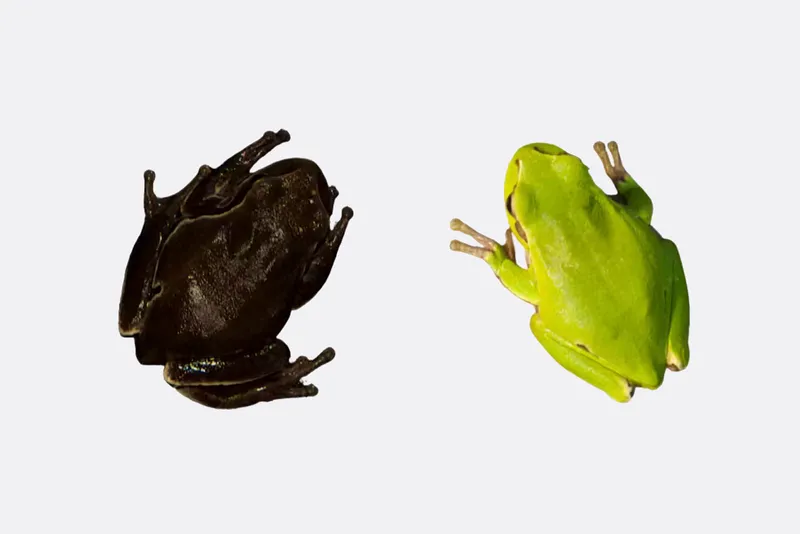Perhaps more than any other form of apocalypse screenwriters indulge, the idea of nuclear devastation is both fascinating for viewers and a terrifyingly real possibility. From Hiroshima and Nagasaki, to Chornobyl and Fukushima, humanity has already witnessed the cost of the nuclear power we now possess.
But what does radiation actually do to an environment where it’s unleashed? Reports in recent years of life flourishing in Chornobyl paint a starkly different picture of the post-apocalyptic wasteland in shows like Amazon Prime’s new Fallout series.
“We’re living in an increasingly radioactive world,” Prof Timothy Mousseau, a biological scientist who’s spent 25 years studying ecosystems at nuclear disaster sites, tells BBC Science Focus.
“So anything we can learn in places like Chornobyl, Fukushima and atomic bomb test sites will be relevant to humans in the end.”
The effects of radiation are generally grim
One thing they got right in the movies? You really don’t want to be caught up in a nuclear disaster if at all possible.
“Television in general is mostly fictional, but there’s always some truth to it,” Mousseau says.
When radioactive events like Chornobyl occur, ionising radiation is released into the environment, which can break or alter the DNA of exposed organisms. These changes, like typos in the genetic code, can lead to mutations.
According to Mousseau, most mutations that occur have no effect on an organism, because they affect parts of the genome where a small rearrangement in the DNA has no consequence.
On the other end of the spectrum, very large mutations are often so deleterious to an organism that, sadly, they die very quickly. Cancer and early-onset cataracts are common mutations which can damage an organism's health substantially.
Read more:
- Top 10: Which are the most radioactive foods?
- Why are there still radioactive elements after billions of years?
- A group of radioactive boars are trotting through Europe
“In between those two extremes, there are a bunch of mutations that have small or partial effects, and so they don’t kill the organism,” Mousseau explains. “You might see individuals with extra digits, strange growths or asymmetries where one leg or wing is longer than another.”
In the case of survivors of the atomic bombs dropped on Japan in 1945, some people were born with a condition called ‘microcephaly’, where damage to an embryo from radiation causes the head to be smaller than usual.
According to the Ministry of Health, Labor and Welfare in Japan, there were 22 patients with so-called ‘A-bomb microcephaly’ living in Japan at the end of March 2011.
Mousseau also points out that changes in colours are another possible mutation, although, no, the species do not glow as certain cartoons might depict. “In birds, for example, the plumage becomes duller in general,” he says.
And it's not just animals either – plant life often takes the brunt of the radiation at nuclear disaster sites as much of the radioactive material is absorbed into the soil. According to the International Atomic Energy Agency (IAEA), leaves on trees in the area surrounding Chornobyl changed shape after the blast.
Meanwhile, the pine forest near the blast site became known as the ‘Red Forest’ as the trees turned from their usual dark green to a rusty red. Authorities later cut down the red forest as any fire in the area risked releasing a radioactive cloud into the skies above.

Overall, as Mousseau puts it, “If you're an organism living in one of these highly radioactive areas, it's not a great place to be.”
Superpowers are (probably) off the table
Not all mutations caused by radiation are necessarily bad for an organism – some can be advantageous.
“Scientists used to experiment on flowering plants by zapping them with radiation to induce mutations. When they planted the seeds, one in every 10,000 or so would do something better, whether that be higher yields or more insect resistance,” Mousseau explains.
According to the IAEA, some 3200 mutant crop varieties have been developed over the decades, including new kinds of sorghum, garlic, wheat, bananas, beans and peppers.
Your morning cup of joe could soon be nuclear too. An ongoing IAEA project is seeking to use nuclear mutation breeding to develop coffee plants resistant to fungal diseases.
Beneficial mutations do occur naturally, however. One study published in the journal Evolutionary Applications in 2022 found that tree frogs in the Chornobyl exclusion zone were on average 44 per cent darker than those outside it.
The reason? Melanin – a natural pigment that makes skin darker at higher concentrations – is known to protect against radiation by producing free radicals that reduce the oxidative stresses that from ionising radiation.

It’s therefore likely that lighter frogs were bombarded with higher levels of radiation and died off at higher rates, leaving behind more darker frogs. Essentially, the radiation caused the tree frogs to evolve in a matter of decades.
Despite this, Mousseau maintains that beneficial mutations are the exception, not the rule: “Evolution has had billions of years to try just about every configuration possible – it’s basically cleaned out almost all of the good ones. So the probability of a new mutation arising that provides some benefit is very, very low.
“So no, you don’t see superpowers.”
About our expert:
Timothy Mousseau is a professor in the Department of Biological Sciences at the University of South Carolina. research expertise includes the genetics of adaptive evolutionary responses in a variety of organisms, from bacteria to man, and since 2000 he has focused on the effects of ionizing radiation and other contaminants on organisms living in Chornobyl, Fukushima, and other radioactive regions of the world. He has edited or co-authored 13 books and 230+ scientific papers, with more than 110 papers related to Chornobyl or Fukushima studies.
Read more: